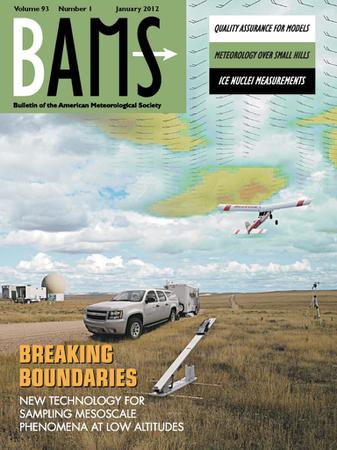回顾过去:讲述细菌如何发现冰核;1963 年至约 20 世纪 80 年代中期。第二部分。扩大范围
IF 6.9
1区 地球科学
Q1 METEOROLOGY & ATMOSPHERIC SCIENCES
引用次数: 0
摘要
摘要 在第 1 部分(Vali and Schnell, 2024; VS24)中,我们描述了我们和我们的同事在 20 世纪 60 年代和 70 年代对生物冰核(bio-INPs)的发现。在零下 10 摄氏度以上的环境中,生物 INP 远比矿物 INP 有效。我们在腐烂的植被和海水中发现了生物 INPs,然后确定细菌是这种非凡活性的最活跃来源。在第二部分中,我们将讲述如何在短短几年内证明生物 INP 来源的全球分布与气候区相关,以及降水中 INP 的丰度。对海洋来源进行了进一步研究,并对雾中生物 INP 的存在进行了诊断。研究表明,生物 INP 有可能释放到大气中。研究发现,细菌 INPs 对植物的抗冻性起着至关重要的作用。本文介绍了这些生物 INPs 及其他生物 INPs 的早期发展。在线第 1 部分补充材料中提供了相关最新文献的参考书目。本文章由计算机程序翻译,如有差异,请以英文原文为准。
Looking back: An account of how ice nucleation by bacteria was discovered; 1963 to about mid-1980s. Part 2. Broadening the scope
Abstract In Part 1 (Vali and Schnell, 2024; VS24) we described the discoveries we and our associates made in the 1960s and 1970s about biological ice nucleators (bio-INPs). Bio-INPs are far more effective than mineral INPs at temperatures above −10°C. The bio-INPs were found in decayed vegetation and in ocean water, then bacteria were identified as being the most active source for this remarkable activity. In this Part 2, we recount how, within a few years, the worldwide distribution of bio-INP sources was shown to correlate with climate zones, as was the abundance of INPs in precipitation. Oceanic sources were further studied and the presence of bio-INPs in fog diagnosed. The potential for release of bio-INPs from to the atmosphere was demonstrated. Bacterial INPs were found to play a crucial role in a plant’s frost resistance. These and other early developments of biological INPs are described. A bibliography of related recent literature is presented in the online Part 1 Supplemental Material.
求助全文
通过发布文献求助,成功后即可免费获取论文全文。
去求助
来源期刊
CiteScore
9.80
自引率
6.20%
发文量
231
审稿时长
6-12 weeks
期刊介绍:
The Bulletin of the American Meteorological Society (BAMS) is the flagship magazine of AMS and publishes articles of interest and significance for the weather, water, and climate community as well as news, editorials, and reviews for AMS members.

 求助内容:
求助内容: 应助结果提醒方式:
应助结果提醒方式:


